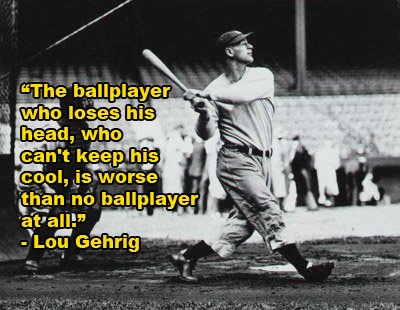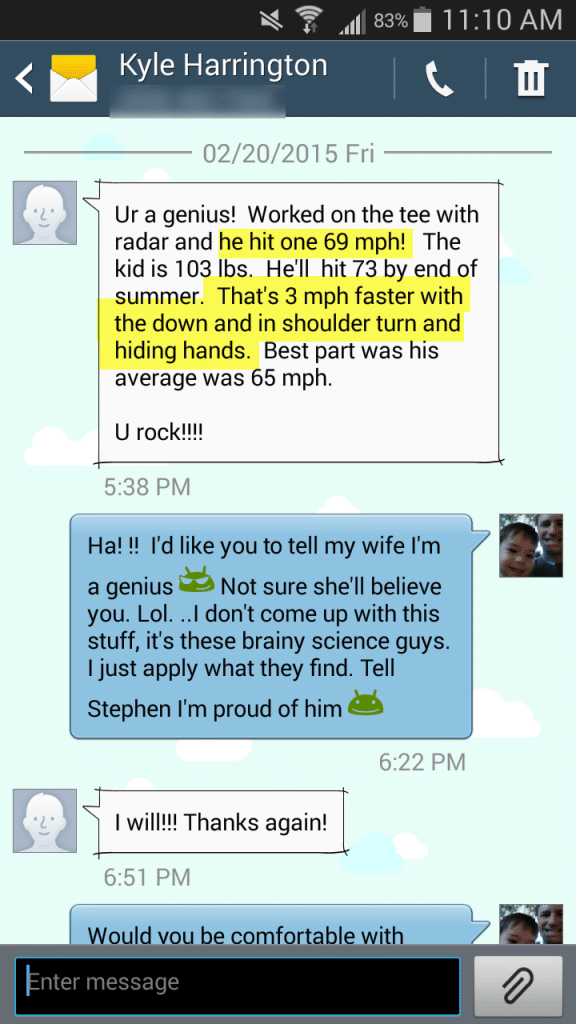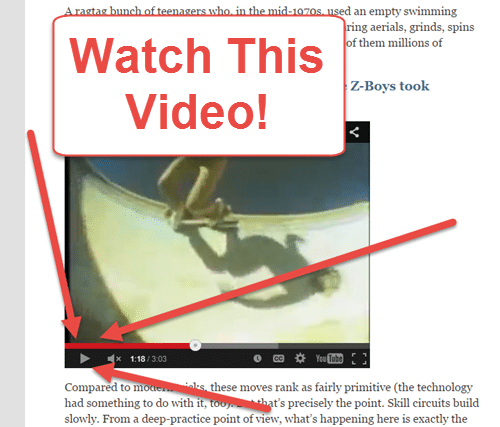Discover the best examples of how to give positive constructive feedback when coaching youth sports, baseball, and softball. Learn the difference between intrinsic and extrinsic feedback, and why giving high information feedback is important.
What Every Coach MUST Know About Giving Feedback To Hitters…

My in-laws had just come over for Easter Sunday, and we were watching my 2-year-old son Noah hit balls off his little tee in the backyard. What transpired was an ah-ha moment for me in giving feedback to hitters…
My brother-in-law was the fielder, and in between swings, my mother-in-law was feeding his tee more balls. Whenever Noah would angle to hit the ball away from my brother-in-law, my mother-in-law would come over and help Noah angle correctly, by moving his body with her hands.
It dawned on me that I’d never given him feedback like that before. I typically just tell him to “hit it that way,” and he angles his body naturally. Which is the better way? And does it matter? There’s a growing body of research and study that reveals the science of giving feedback to hitters.
First, let’s see how you’d answer the following 3 questions…
1. Do you give verbal feedback between each swing?
OR, wait till the end of a round?
2. Do you use internal cues like a focus on the feet?
OR, focus on external ones outside the feet?
3. Do you physically move the player into a better position yourself?
OR, do you allow the player to make adjustments on their own?
How’d you do? Don’t worry about being wrong…
In this post, we’re going to look at how science answers the 3 previous questions on giving feedback to hitters…
SCIENCE-BASED TRAINING:
Improve your hitting strategy dramatically by applying human movement principles.
Learn not only how and what to train but also the science behind the methods.
1. Do you give verbal feedback between each swing? OR, wait till the end of a round?

To give this section some context, check out Daniel Coyle’s post about the Z-Boys by CLICKING the image above…
Daniel Coyle, in his book The Talent Code , talks about The Language of Ignition. He shares a story from Skip Engblom, the guy who coached the Z-Boys surf/skateboarding team in the 1970’s.
, talks about The Language of Ignition. He shares a story from Skip Engblom, the guy who coached the Z-Boys surf/skateboarding team in the 1970’s.
Enter Coach Skip… (by the way ‘unowaime?’ is Skip-Talk for ‘you know what I mean?’):
“When it came to skateboards, we got all systematic about it, practiced a couple hours a day, four days a week. There’s no instant gratification, man. Everything boils back down to training, doing it over and over. So I never said much. I would just be mellow and say ‘good job, dude’ or ‘nice shred,’ and sometimes something to up the ante, toss in a little carrot, you know, like ‘I heard so-and-so did that trick last week.’ And then they’d all be trying like crazy to do that one, unowaime?”
…”Here’s the deal. You’ve got to give kids credit at a younger age for feeling stuff more acutely. When you say something to a kid, you’ve got to know what you’re saying to them. The stuff you say to a kid starting out — you got to be super careful, unowaime? What skill-building really is, is confidence-building. First, they got to earn it, then they got it. And once it gets lit, it stays lit pretty good.”
In giving feedback to hitters, pretend words are precious. Imagine that every word you say costs YOU money. The less words you use, the smaller your bill is at the end of a session. Make your words more impactful, more purposeful.
I wait till the end of a round (5-swings or so) to give feedback. And even then, I’m quizzing THEM on what they did or felt, NOT telling what I think. This works wonders in giving feedback to hitters that makes coaching sticky.
FREE Online Bat Speed Hitting Program Access?
Try our online bat speed hitting training program Risk Free built for baseball and softball hitting enthusiasts like you. 30-Day Risk FREE Trial for LIMITED TIME only.
Click Button Below to choose the best remote learning plan for you...
YES! I Want To Choose My Plan
2. Do you use internal cues like a focus on the feet? OR, focus on external ones outside the feet?

Stabilometer, photo courtesy: hospimedicaintl.com
I found a study by Charles H. Shea & Gabriele Wulf that was published at ScienceDirect.com titled, “Enhancing Motor Learning Through External-Focus Instructions and Feedback”, that illuminates a piece of the giving feedback to hitter’s puzzle… (CLICK HERE for the study abstract):
They had four groups who practiced balancing on a Stabilometer:
- Group 1 – Focused on balancing with their feet (internal),
- Group 2 – Focused on balancing by looking at a marker on the Stabilometer (external),
- Group 3 – Concurrent feedback watching deviations from the horizontal on a computer screen and telling them the line represented their feet (feedback/internal focus), and
- Group 4 – Concurrent feedback watching deviations from the horizontal on a computer screen and telling them the line represented the markers (feedback/external focus).
Study conclusions:
- Both external focus of attention and feedback enhanced learning.
- Learning benefits of an external attentional focus seem to generalize the feedback given to the learner.
- Feedback generally enhanced performance and learning, suggesting that one function of feedback might be to promote an external focus of attention.
According to sports performance psychologist and distinguished PGA Tour mental coach, Gio Valiante, elite golfers use an external focus during tournaments by “moving towards the cup”. In other words, they aren’t focusing internally about their mechanics.
Giving feedback to hitters works in the same way…I use feedback markers when working on footwork. I urge them to “get to the markers” (external) instead of a focus on their feet (internal).
3. Do you physically move the player into a better position yourself? OR, do you allow the player to make adjustments on their own?

Great golf book on the mental process. It has nothing to do with hitting, but at the same time has everything to do with it.

 In a book by Gio Valiante called Golf Flow
In a book by Gio Valiante called Golf Flow , he recalls a class session where he’s also a professor at Rollins College in Winter Park, Florida…
, he recalls a class session where he’s also a professor at Rollins College in Winter Park, Florida…
In the middle of class, that was being video recorded, he asked a female student to walk up and try her hand at sinking a putt on a 6-foot artificial turf green he had set up.
The first try was rushed, and she missed horribly beyond the cup.
The second try she took more time to line up, and the putt came up a bit short.
The third try she took a little more time, made a few mechanical adjustments, then sank the putt!
Please note that during the test, not a word was said to her.
Dr. Gio Valiante then had everyone in the class watch the video back of her whole session. He instructed the class to analyze what key adjustments she made after her misses.
The key here is that the female student made the adjustments on her own. Just like the Z-Boys skateboarding example above.
This has major implications on giving feedback to hitters…
Returning back to my mother-in-law’s reaction to Noah, when he was lining up to hit the ball off the tee…
The ah-ha moment for me was seeing Noah’s brain turn off as my mother-in-law did the dirty work of moving him into the right position. In other words, he didn’t have to think about the adjustment, and make it himself.
Based on the research of this post, this leads to a longer learning curve. So:
- Keep verbal feedback (or cues) short and punchy,
- Use external focuses (i.e. video analysis, “hit it over there!”), and
- Make sure when you’re giving feedback to hitters, that you allow for natural adjustments to be made like in the case of Dr. Gio’s female student and my son Noah.
FREE Online Bat Speed Hitting Program Access?
Try our online bat speed hitting training program Risk Free built for baseball and softball hitting enthusiasts like you. 30-Day Risk FREE Trial for LIMITED TIME only.
Click Button Below to choose the best remote learning plan for you...
YES! I Want To Choose My Plan
























